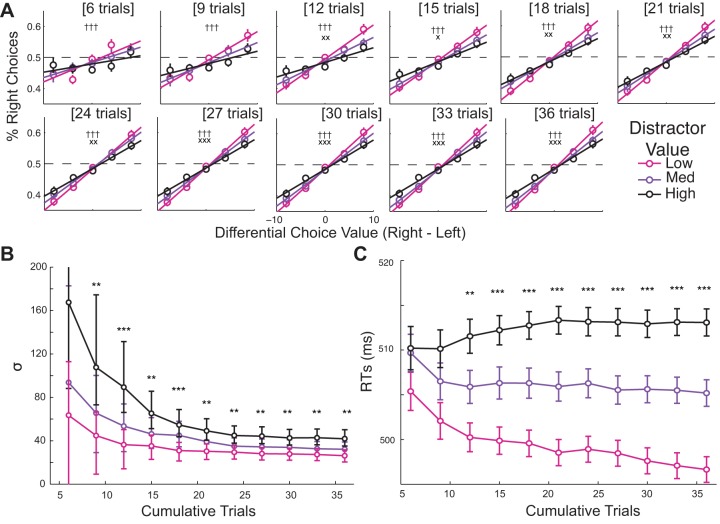Fig. 3.
Choice behavior and RT data across trials. A: probability of right choices as a function of differential choice value (right minus left choice values) and distractor value (low, medium, and high) computed across the first 6–36 cumulative trials within each miniblock of 36 trials. Data from Exp1 and Exp2 are combined to improve analysis power. Overall, subjects exhibit a bias toward higher-valued choices within the first 6 trials, and the modulation of this bias by distractor value emerges within the first 12 trials. Error bars represent within-subject SE. B: corresponding σ parameters from fitting the choice probability data with a cumulative Gaussian function. Error bars indicate within-subject 95% confidence intervals. C: RTs plotted as a function of distractor value across the first 6–36 cumulative trials. Similar to choice behavior, the modulation of RTs by distractor value emerges within the first 12 trials. Error bars represent within-subject SE. **,***Significant main effect of distractor value [P < 0.01 and P < 0.001 with false discovery rate (FDR) correction for multiple comparisons]. †††Significant main effect of differential choice value (P < 0.001, FDR-corrected). x,xx,xxxSignificant interactions between differential choice value and distractor value (P ≤ 0.012, P < 0.01, and P < 0.001, FDR-corrected).

